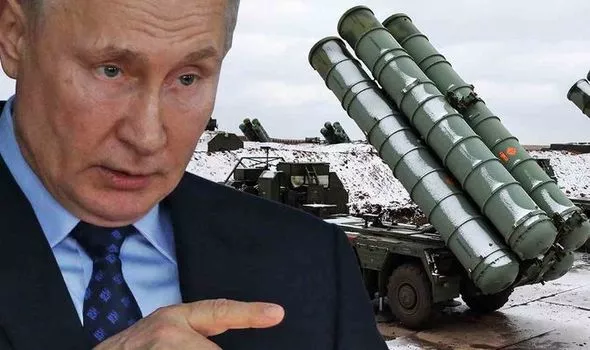|

An especially strong component of the growing Russian threat is Moscow‘s increasing—and increasingly varied—nuclear capability.
These novel strategic systems also enhance Russian President Vladimir Putin’s domestic political power.
Russia is—and will continue to be—a dynamic, advanced, and global military superpower.
In the new great power competition, Russia is ready to rumble.
Indeed, in recent years, Russia has unveiled the hypersonic vehicle-carrying Sarmat ICBM, the Avangard hypersonic boost-glide vehicle, the Tsirkon sea-launched hypersonic cruise missile, and the Kinzhal air-launched hypersonic ballistic missile.
It also has revealed the Burvestnik nuclear-powered cruise missile and the Poseidon nuclear-powered underwater drone—all posing new security challenges for the United States and its NATO allies.
Get exclusive insider information from Heritage experts delivered straight to your inbox each week. Subscribe to The Agenda >>
These nontraditional, novel weapons are especially troubling considering Moscow‘s bad behavior, from its actions in Ukraine to its use of chemical weapons in assassination attempts at home and abroad.
>>> Responding to Troubling Trends in Russia’s Nuclear Weapons Program
Indeed, the Heritage Foundation‘s 2021 Index of U.S. Military Strength concludes that “Russia remains the primary threat to American interests in Europe and is the most pressing threat to the United States.”
An especially strong component of the growing Russian threat is Moscow‘s increasing—and increasingly varied—nuclear capability. In addition to the six new systems noted above, Russia is reportedly modernizing the entirety of its nuclear arsenal.
Indeed, reports out of Russia suggest that the Kremlin may have updated more than 80% of its nuclear arsenal. The six nontraditional nuclear weapons systems play an interesting role in that modernization.
These novel strategic systems reflect a clear and determined effort to enhance Russia‘s status as a great power and increase its ability to exert political-military power over competitors, particularly the U.S. and NATO.
These new weapons also expand Russian nuclear first- and second-strike options, strengthening Moscow‘s strategic deterrent. They also provide Moscow with greater freedom of action internationally—which means only one thing: more trouble.
Of course, not only do these weapons diversify and deepen Russia‘s military threats, they also signal Russia‘s continuing commitment to the centrality of its nuclear forces in defense policy and its ongoing drive for military superiority.
Lastly, these novel strategic systems also enhance Russian President Vladimir Putin’s domestic political power by proving his continuing commitment to defending against (Kremlin-generated perceptions of) threats from the United States and NATO.
But let’s not forget about Russia‘s nonstrategic nuclear stockpile, either.
The 2018 Nuclear Posture Review reminds us that Russia retains large numbers of nonstrategic (i.e., “low-yield”) nuclear weapons, adopting military strategies that “rely on nuclear escalation for their success.”
The potential use of these battlefield nuclear weapons for regional war fighting is very troubling.
While some experts reasonably question the utility and significance of the six new, nontraditional systems, they should be taken seriously—especially the hypersonic weapons.
Accordingly, in response, the United States should:
Continue to make the development of missile defense capabilities a U.S. and NATO defense priority, including the development and deployment of counter-hypersonic capabilities and space-based sensors;
Increase, alongside U.S. allies and partners, deterrence against Russia‘s conventional and hybrid threats to NATO and Europe in order to reduce the chances of escalation and open conflict;
Fund U.S. nuclear modernization for the purposes of providing political—military assurance to allies and maintaining U.S. direct and extended strategic deterrence capabilities, possibly reducing the risk of Russian international adventurism; and
Engage Russia in substantive diplomatic and security dialogues about these new strategic weapon systems as soon as possible for reasons of strategic stability, nuclear risk reduction, and even potential arms control.
It’s unclear whether all or just some of these new Russian strategic weapons will ultimately be fielded—or be deployed in militarily significant numbers. For the moment, the new, nontraditional weapons mark a significant emphasis on nuclear weapons systems as central to Russia‘s defense plans, doctrine, and policy.
These weapons also send unmistakable messages to Moscow‘s competitors and potential foes. Message 1: Russia is—and will continue to be—a dynamic, advanced, and global military superpower.
Message 2: Mr. Putin’s Russia—with its bulging nuclear arsenal—isn’t in the mood to be messed with any time soon.
|



